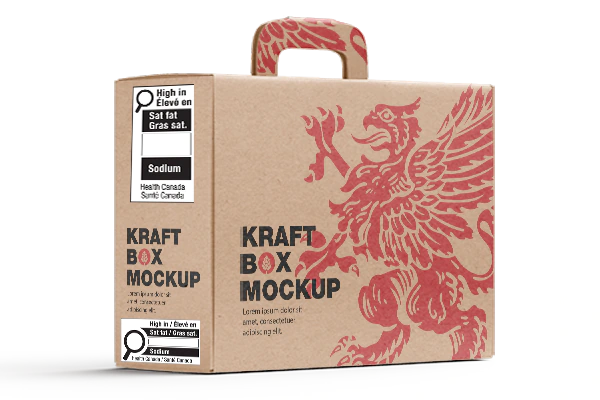The Canadian government has introduced a new front-of-package labeling law to help consumers make more informed choices about the foods they eat. The law will require most prepackaged foods that are sold in Canada to display a standardized front-of-package label.
The new label will include essential information about the food’s nutritional content, including calories, fat, sodium, and sugar. The label will also feature a symbol to indicate whether the food is a high or low source of certain nutrients.
The new labeling law is designed to help consumers make more informed choices about the foods they eat and to highlight foods that meet or exceed health guidelines clearly. The expectation is that the introduction of the law will hopefully help reduce the prevalence of chronic diseases such as obesity, heart disease, and type 2 diabetes.
Read more: Feed More or Feed Less – Scaling Recipes for Event Dining
What are the rules for Canada’s new law?
The new law applies to all prepackaged foods that are sold in Canada, with some exceptions. Foods that are exempt from the law include:
- Fresh fruits and vegetables
- Raw meat and poultry
- Fish and shellfish
- Dairy products
- Eggs
- Breads, cereals, and pasta
- Coffee, tea, and herbal teas
- Water (including sparkling water)
- Baby food and formula
- Nutritional supplements
- Foods that are packaged for sale in a restaurant or other food service establishments
The new law requires that all foods that are subject to the law must have a front-of-package (FOP) nutrition label. The label must include the following:
- The amount of saturated fat, sugars, and sodium in the product
- The % Daily Value (%DV) of these nutrients
- A magnifying glass symbol to help consumers identify products that are high in saturated fat, sugars, and/or sodium
The new law is based on the principle that Canadians should be able to easily see how much saturated fat, sugars, and sodium are in the foods they eat. This will help them make informed choices about the foods they buy and consume.
Read more: How to Decide whether a Food is Healthy or Unhealthy
What is the timeline for implementation?
The new law will come into effect on July 20, 2022. The food industry will have until January 1, 2026 to put this regulation in place.
Read more: Windmill Bakery – Muskoka Cottage Country’s Go-To for Nutritious Breads and Goodies
What are the benefits of this new law?
There are many benefits to this new law, including:
- Making it easier for Canadians to make healthier choices about the foods they eat;
- Improving the health of Canadians by reducing the consumption of unhealthy foods;
- Reducing the burden on our healthcare system by preventing or delaying chronic diseases such as obesity, heart disease, and type 2 diabetes;
- Saving money by reducing the costs associated with chronic diseases.
Read more: How Restaurants are Profiting with New Software
What does this mean for food manufacturers and retailers?
Food manufacturers and retailers must place a magnifying-glass symbol on the front of packages for foods that meet or exceed certain thresholds for saturated fat, sugars, and sodium. This will serve several different purposes. To start it will help consumers identify these important details about foods faster. An additional benefit though is that it will help increase trust between consumers and manufacturers.
Read more: 6 Reasons Adding Nutrition Information for Customers Boosts Sales
Are there similar rules in other countries?
Canada is not the only country to create FOP regulations. In fact, many countries, including, Chile, Australia, and the UK, have already implemented FOP nutrition labeling. In Chile, where a comparable front-of-package labeling system is being implemented, the advantages have been significant, with it being estimated that household food purchases contained 37% less salt and 27% less sugar.
Read more: Food Marketing & Branding with Sean Beckingham
How will new labeling laws help?
There are many potential benefits of front-of-package nutrition labeling. For instance, it has been shown to:
- Help consumers make more informed choices about the foods they eat
- Lead to healthier diets
- Reduce the prevalence of diet-related diseases such as obesity and heart disease
- Lower healthcare costs associated with diet-related diseases
By providing labels with a consistent look and message, front-of-package labeling can help nudge people toward healthier eating habits. In addition, by being more transparent about ingredients, consumer trust will only increase.
If you want to be ready for new upcoming changes in labeling laws, or are just looking to add nutrition fact labels, give MenuSano a try. Take advantage of our free trial and see just how easy it can be to provide your customers the transparency they need to make healthy choices.




















